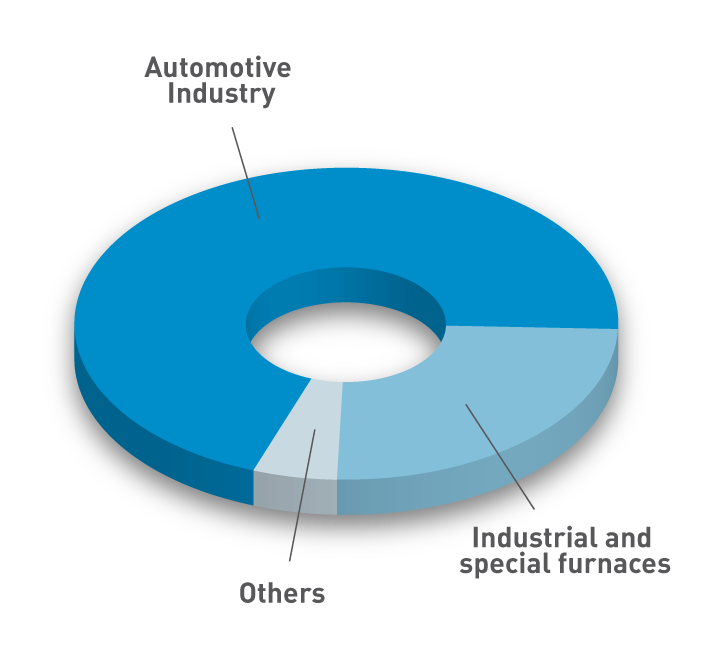- Commercialized in the early 1970s
- Unique characteristics
- Produced in relatively small quantities for very specific applications
- Typically used from 600 °C to 1700 °C
Polycrystalline Wools (PCWs) are made predominantly of aluminum (content typically 72-99% in the form of oxide) with the remainder consisting of silicon. The fibres are manufactured by sol-gel technology using gel extrusion, spinning and/or drawing in controlled air streams, using equipment/processes specifically designed to produce fibres of defined dimensions. These are then subjected to high-temperature treatment to produce the required polycrystalline structure.
Key features are:
- Defined dimensions
- Chemical and thermal stability
- Low linear shrinkage
- Low thermal mass and good insulating properties
- High tensile strength
- Low content of ‘shot’ (non-fibrous particles)
It is these defining characteristics that have resulted in PCWs being used in the most demanding of thermo/ mechanical applications, for example in the ceramics, metals, petrochemicals, aerospace and automotive industry sectors.
Typical PCW applications include use as support mats in catalytic converters and diesel particulate filters to reduce exhaust emissions, and as insulation in industrial high temperature furnaces for energy conservation, particularly in high temperature and/or chemically aggressive environments .
Specific technical product information is available from your supplier.
Application of PCW

Regulatory Classification Status
PCWs are not classified in the EU. In Germany, under TRGS 905 providing technical guidance on worker protection, supplementing or extending Annex 1 of EU Directive 67/548, fibrous dusts emanating from the handling of “ other inorganic types of WHO fibre dusts” not listed elsewhere, including PCW dust, are classified as Category K2: „… cause concern for man owing to possible carcinogenic effects but in respect of which the available information is not adequate for making a satisfactory assessment …” Although the TRGSs are not laws they are technical rules/recommendations that have a quasi-legal status.
PCW & REACH
Regulation (EC) No 1907/2006 of the European Parliament and the Council of 18 December 2006 concerning the Registration, Evaluation, Authorization and Restriction of Chemicals (REACH) requires manufacturers, importers and or the exclusive representative of non-European manufacturers to share data on potential health and environmental hazard and provide data to the European Chemicals Agency (ECHA) in a formalized registration process.
PCW is REACH registered and can therefore be used in the European market.
Cartoon; Best working practices
A number of member states have national Occupational Exposure Limits for MMVF’s (including LBPs). Care should be taken to minimise generating workplace dust when handling any HTIW Product. More information can be found in the support section.
Further specific information can be found on your supplier’s SDS.
All relevant local, state, regional and national regulations should be observed at all times when using these products.
Regulatory Classification Status
Read more on the current European (and German) classification status of these products.
